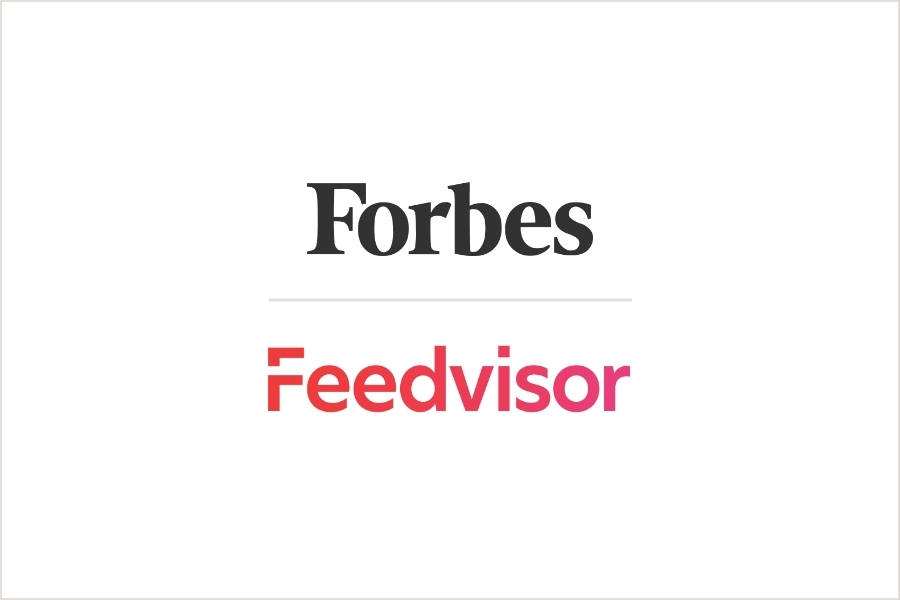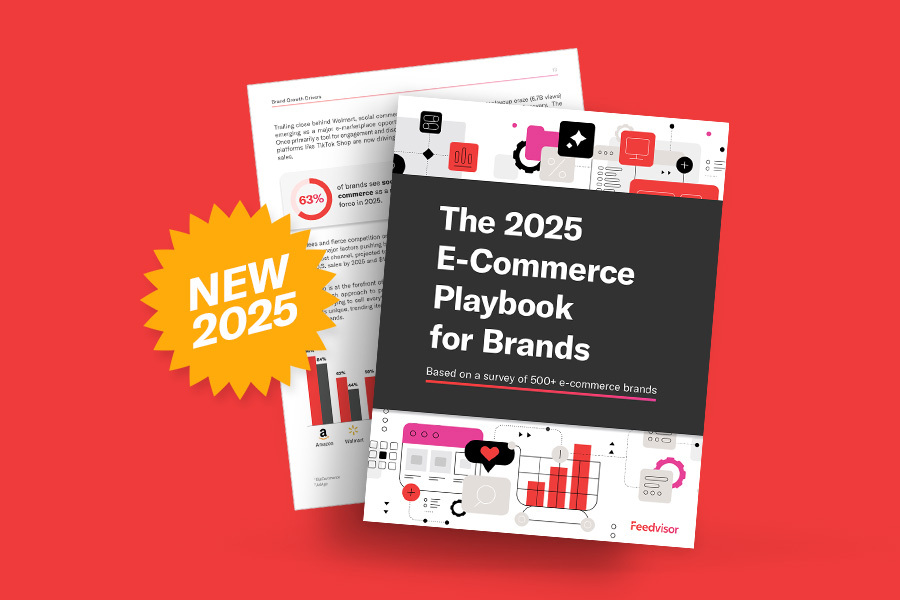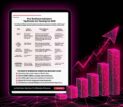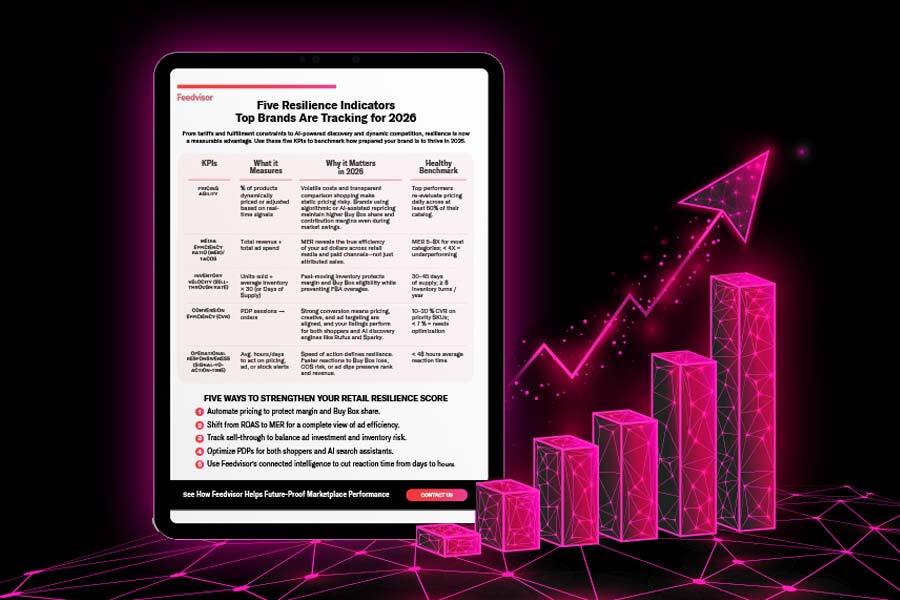
Categories
Latest Posts
Tags
Advertising Amazon Amazon Advertising Amazon Experts Amazon Listing Optimization Amazon Marketplace Amazon News Amazon Prime Amazon Professional Sellers Summit Amazon Seller amazon sellers Amazon Seller Tips Amazon Seller Tools ASIN Brand Management Brands Buy Box Campaign Manager Conference COVID-19 downloadable Dynamic Pricing Ecommerce FBA FBM Holiday Season industry news Multi-Channel Fulfillment Optimize pay-per-click Pricing Algorithm Pricing Software Private Label Profits Repricing Repricing Software Revenue Sales Seller Seller-Fulfilled Prime Seller Performance Metrics SEO SKU Sponsored Products Ads Strategy
Get the latest insights right in your inbox
Resource | Blog

E-Commerce Marketing Trends 2025: Why Brands Are Spending More but Trusting Less
And What Our Brand Survey Reveals About AI, Measurement, Personalization, and Pricing Pressures
SUMMARY
As marketplace dynamics shift and digital budgets expand, brand leaders are facing a paradox: record investments in retail media and marketing technology—paired with growing skepticism about what’s actually working.

Dani Nadel
Dani Nadel is the President and Chief Operating Officer at Feedvisor. She is a recognized marketing and digital expert with more than 20 years of hands-on experience managing nationally recognized consumer and corporate brands.
According to our latest 2025 E-Commerce Brand Benchmark Survey, over 40% of U.S. brands now operate with annual e-commerce budgets exceeding $500,000, and nearly 1 in 5 surpass the $1 million mark. Much of this spend is flowing into retail media networks (RMNs).
Amazon dominates, capturing 39% of brand e-commerce spend, followed by Walmart (15%), Facebook (9%), and TikTok (7%). These platforms offer scale, targeting, and native shopping integration—but they also bring heightened expectations around advertising performance and transparency.
At the same time, macroeconomic pressures—from rising tariffs to unpredictable fulfillment costs—are squeezing margins. Brands must do more with every dollar, driving urgency for smarter media planning, more precise targeting, and better ROI tracking.
But with increased spend comes higher scrutiny. Every marketing dollar must now work harder, deliver smarter, and prove its contribution to long-term value.
Integrated Solution
Future-Proof Your Business with the Leading E-Marketplace Optimization Technology
Measurement is the Pressure Point
Retail media’s rapid rise is testing the limits of legacy measurement. As more ad dollars flow into RMNs, brand leaders are demanding more than surface-level metrics. While 53% of brands still rely on return on ad spend (RoAS), forward-thinking marketers are evolving their approach with models that to go far beyond last-click attribution.
Key trends from our survey include:
- Growing adoption of media mix modeling
- A shift toward incrementality and lifetime value (LTV) over last-click attribution
- Increased focus on repeat purchase rate as a key performance metric
Brands are doubling down on first-party data and advanced attribution tools to understand the true value of every impression. It’s part of a broader shift toward data-driven accountability, and a clear signal that RMNs will be expected to raise the bar on transparency and reporting.

Lead the Market in 2025: What Data from 500+ Brands Tells Us
Uncover the strategies top brands are using to thrive despite rising risks and costs.
AI in E-Commerce: High Potential, Low Readiness
AI and Automation are reshaping what’s possible. Our survey reveals:
- Nearly 80% of brands believe AI will be transformative for marketing and personalization.
- 48% are already using AI to automate advertising and manage inventory.
The ability to dynamically adjust bids and budgets, optimize creative, and align supply with demand through AI is unlocking new levels of precision. And the impact is real: when personalization is done well, it can lift average revenue per user by up to 166%.
But here’s the catch: adoption is outpacing readiness. Most brands aren’t yet set up for hyper-personalized experiences at scale. And 63% of consumers express concern about how their data is used for AI-driven targeting.
Economic Pressures Make Precision Even More Urgent
This shift in marketing strategy isn’t happening in a vacuum. Rising costs—from new import tariffs on goods from China to fulfillment and logistics volatility to fulfillment fees—are putting additional strain on brand profitability.
As a result, dynamic pricing is becoming a strategic advantage.
With marketplace algorithms constantly adjusting prices and competitors reacting in real time, brands can no longer afford static pricing models. Our survey shows that AI-powered pricing tools are gaining traction, especially among brands selling on Amazon and Walmart, where price directly impacts search visibility and Buy Box performance. The ability to automate pricing decisions based on demand signals, competitor moves, and inventory levels is proving essential for staying competitive without sacrificing margin.
The Bottom Line
This creates a critical moment for brands: invest in the right infrastructure, set responsible data practices, and leverage AI in ways that genuinely add value—or risk losing or alienating the very customers you’re trying to win.
At the same time, brands must be vigilant in navigating pricing pressures and tariff-related cost increases. With competition just a click away, how—and when—you adjust pricing, re-up inventory, or shift sourcing can make or break your margins. The most strategic brands are already using real-time data and AI to monitor competitor moves, model pricing scenarios, and make smart trade-offs: whether that means passing on costs, repackaging value, or renegotiating with suppliers.
In a landscape defined by rising costs, tighter margins, and smarter platforms, success will belong to the brands that move faster, measure better, and price with precision.
Want to dive deeper into this year’s top e-commerce marketing trends? Download the full 2025 brand benchmark survey—or read my latest Forbes article on why brands must evolve their e-commerce strategies to stay competitive in 2025.




